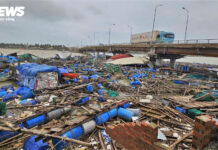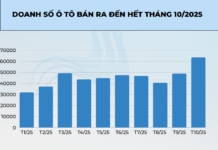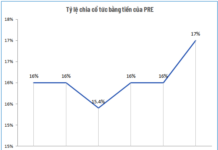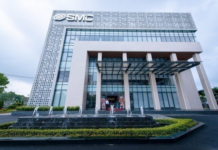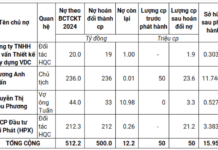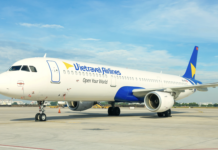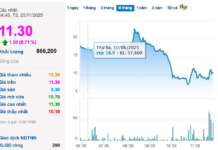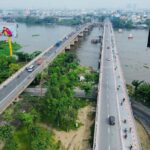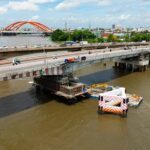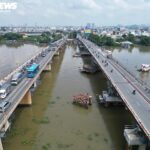
Panoramic view of Binh Trieu 1 Bridge (right) after the clearance height upgrade.
Speaking at the ceremony, Mr. Nguyen Xuan Vinh, Director of the Center for Road Infrastructure Management (HCMC Department of Construction), stated that Binh Trieu 1 Bridge was built before 1975 and renovated in 2010. However, its clearance height of only 5.5 meters failed to meet the new waterway traffic demands. The clearance height upgrade is an urgent requirement to ensure maritime safety, enhance navigability, and support the socio-economic development of the Southeast region.
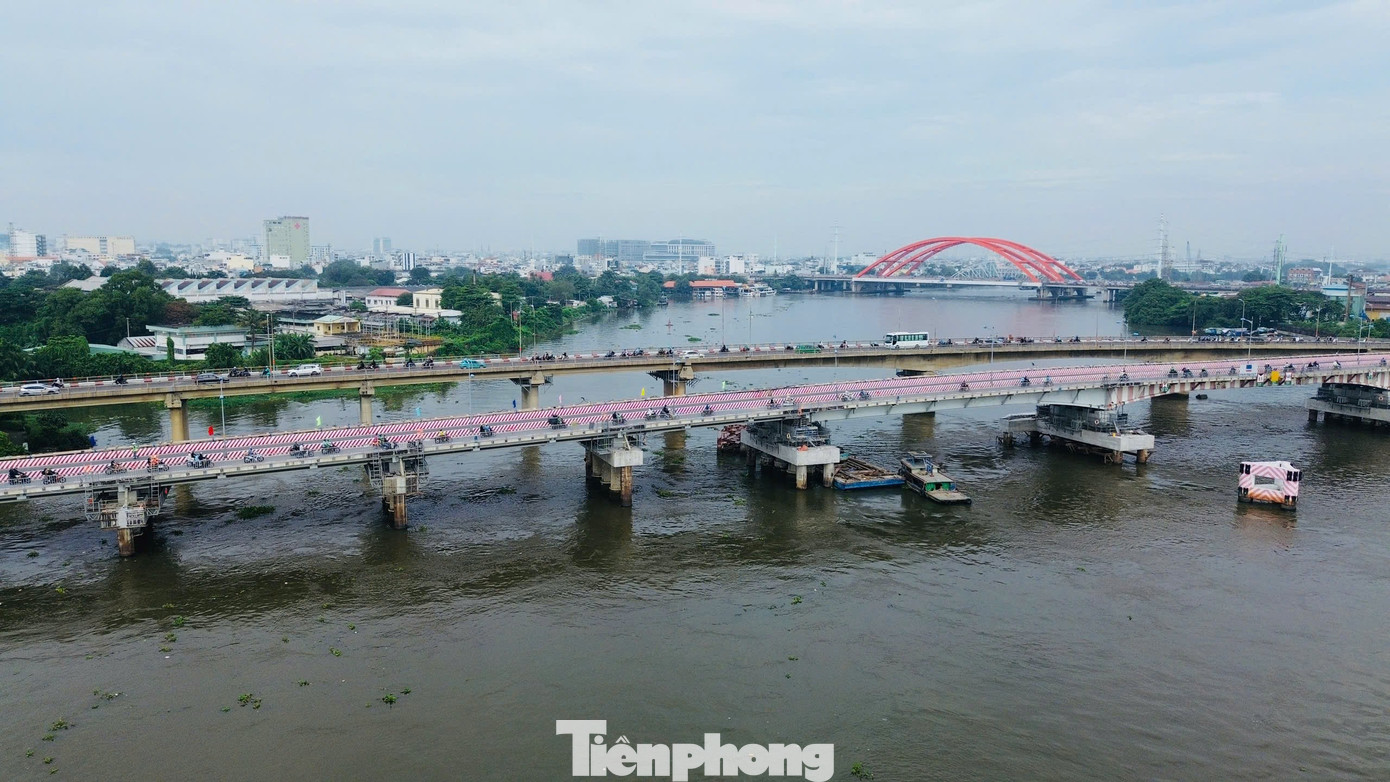
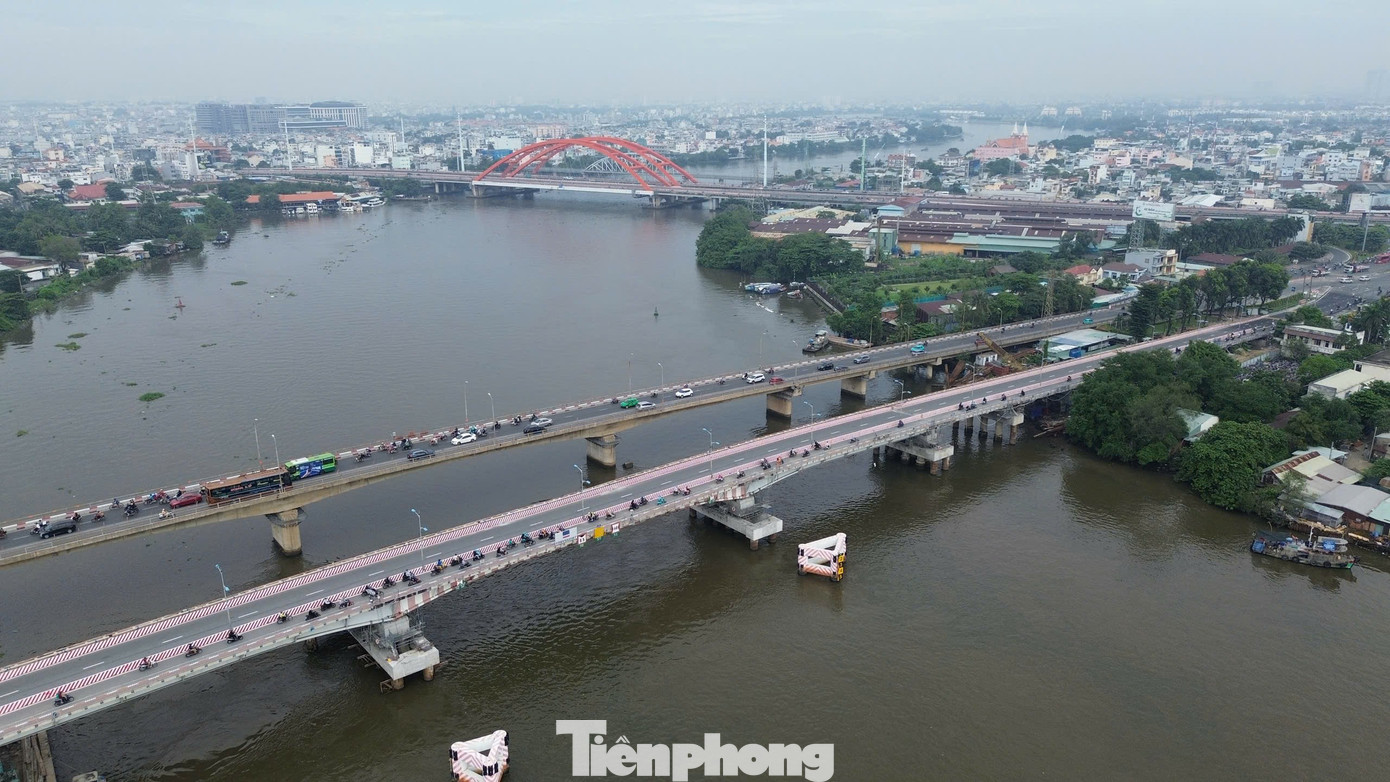
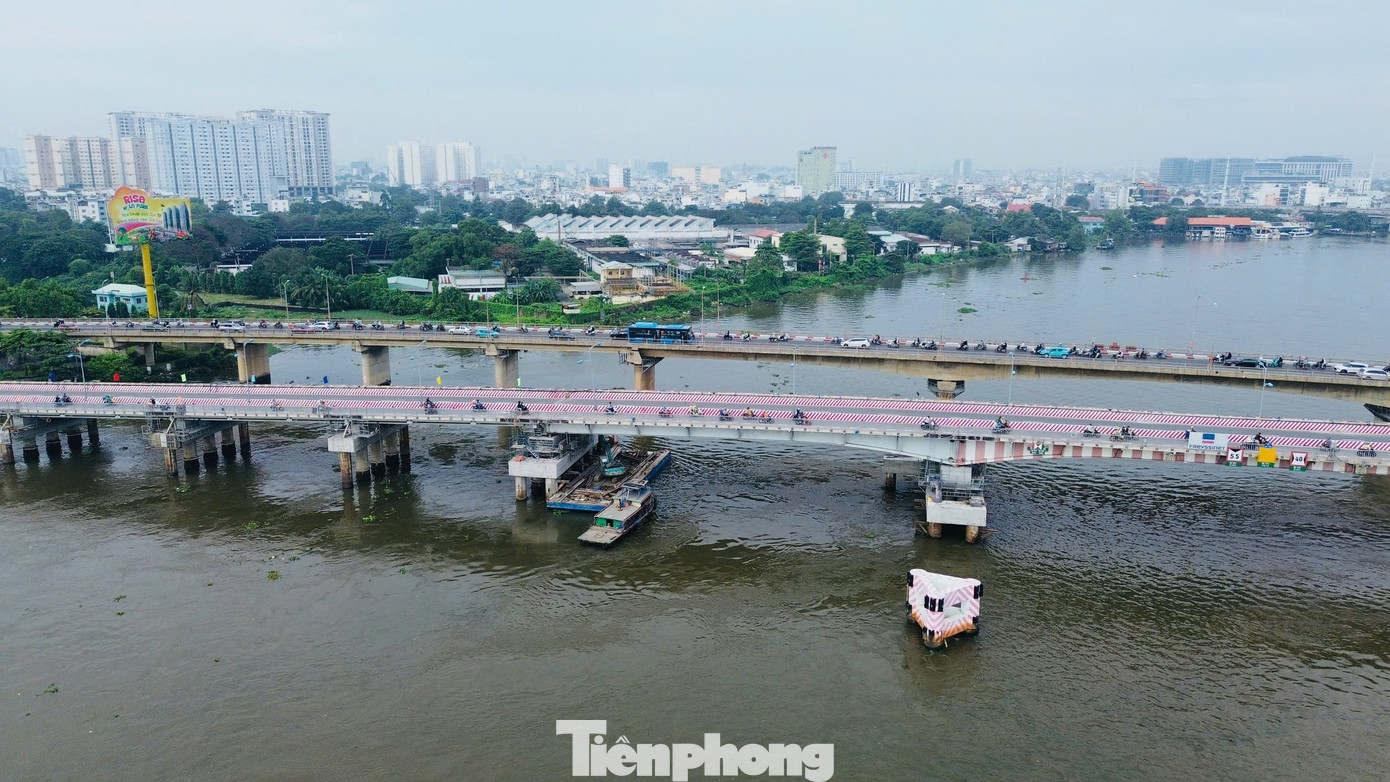

Binh Trieu 1 Bridge after raising its clearance height by approximately 1 meter.
According to the Saigon Port and River Route Plan, waterways in this area must maintain a minimum clearance height of 7 meters to accommodate vessels carrying 2,000–3,000 tons. “Therefore, the Binh Trieu 1 Bridge clearance height upgrade project was approved to meet new technical standards while minimizing disruption to traffic at the northern gateway of the city,” said Mr. Vinh.

Delegates participate in the opening ceremony of the Binh Trieu 1 Bridge clearance height upgrade project.
Mr. Nguyen Xuan Vinh mentioned that during the planning phase, authorities considered multiple options, including constructing a new Binh Trieu 1 Bridge with an estimated investment of VND 1 trillion. However, the bridge lifting option was chosen due to its lower cost of over VND 100 billion, which still meets technical objectives while maintaining traffic flow on this critical gateway.
“This technical solution is being applied in Vietnam for the first time. Despite the modest investment, it delivers significant benefits by saving costs, ensuring construction safety, and minimizing disruption to residents,” Mr. Vinh emphasized.
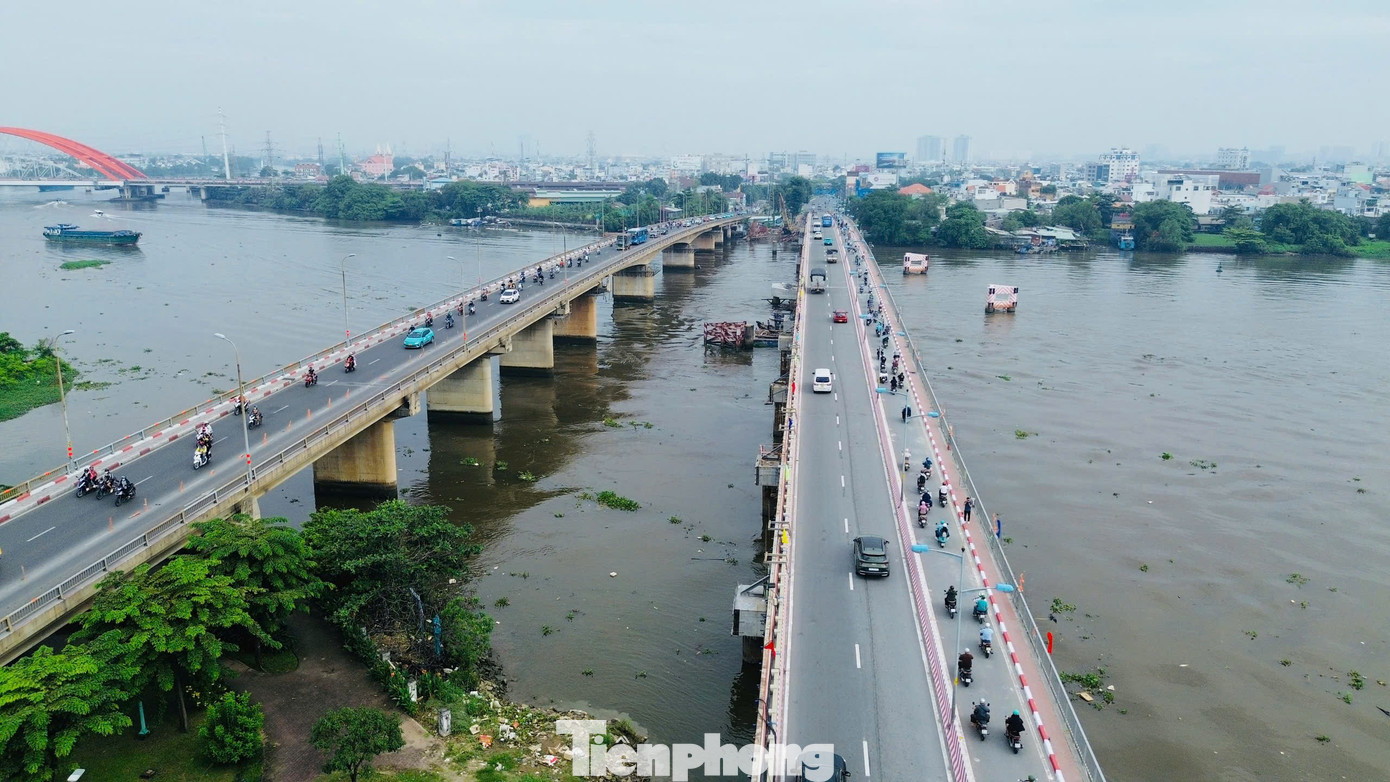
After the clearance height upgrade, Binh Trieu 1 Bridge (right) now matches the height of the adjacent Binh Trieu 2 Bridge.
Mr. Tran Quang Lam, Director of HCMC Department of Construction, added that during the planning phase, the city carefully evaluated various options for raising the bridge’s clearance height, including complete reconstruction. However, after thorough technical and traffic analysis, the city opted to enhance the existing structure to optimize costs and minimize resident impact.
“Reconstructing the bridge would cost approximately VND 1 trillion, whereas the clearance height upgrade costs only over VND 100 billion but still achieves the goals of increasing load capacity, extending lifespan, and ensuring smooth traffic flow. This is the optimal solution,” Mr. Lam stressed.
He further noted, “During the 9-month construction period, traffic restrictions for cars lasted only about 3 months, with normal traffic flow for the remainder. Today, we fully restore traffic to its previous state.”
The project is not only cost-effective and timely but also a pioneering technical achievement. HCMC has, for the first time, implemented a bridge structure lifting solution using a modern hydraulic system with high precision. This solution has received praise from experts at the Ministry of Construction.
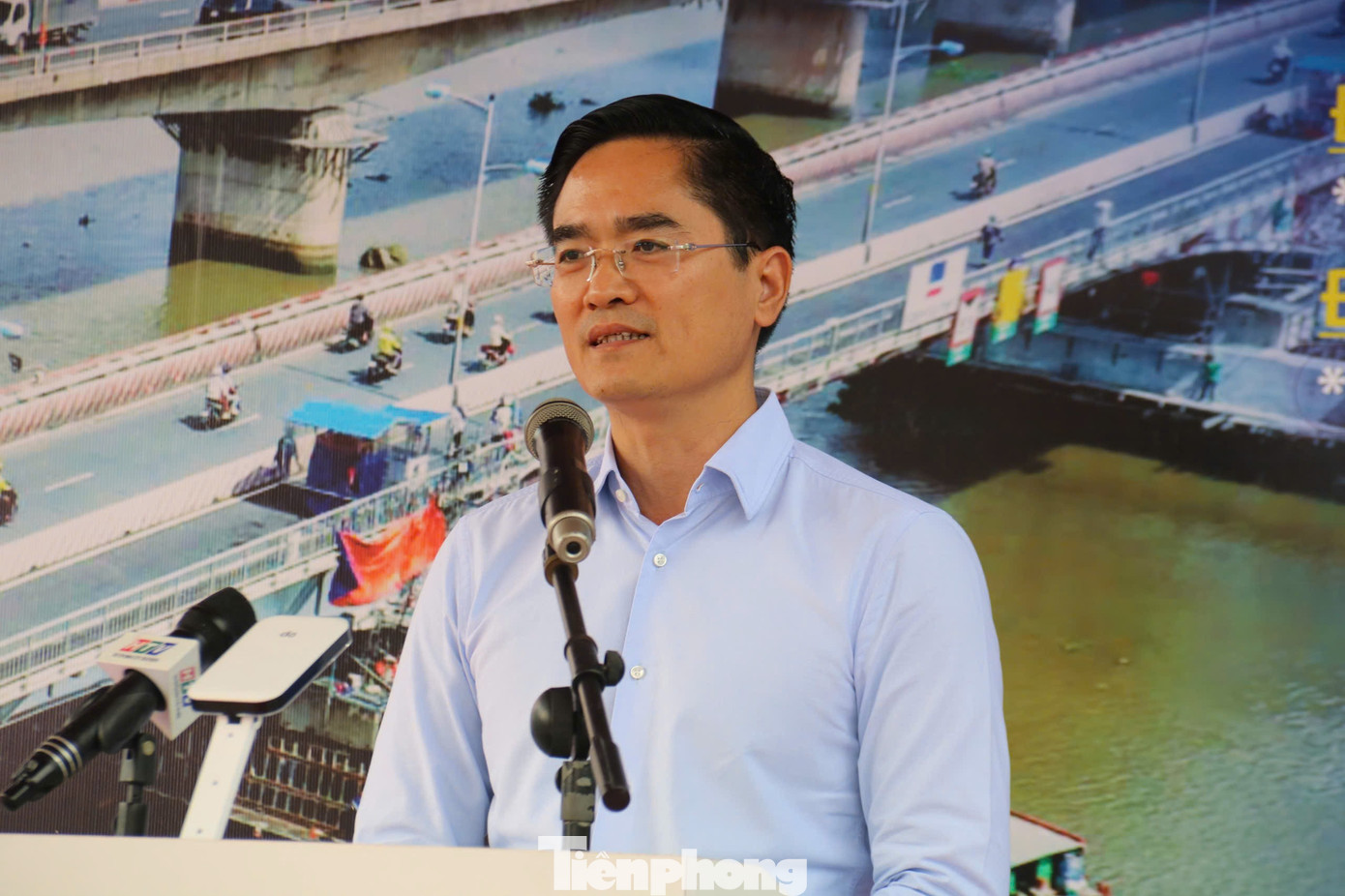
Mr. Tran Quang Lam, Director of HCMC Department of Construction.
“Despite the modest investment, this is a novel technical solution applied for the first time in Vietnam. The project embodies the spirit of ‘dare to think and act’: boldly adopting new solutions, ensuring safe and scientific construction, saving costs, and minimizing disruption to residents,” said the Director of HCMC Department of Construction. He added that the project involved leading experts in the field of bridge construction, including Prof. Tran Xuan Tung and Mr. Nguyen Van Nham, who are considered “pillars” in bridge structure.
Construction was carried out by internationally experienced units, including Freyssinet (France), a renowned company specializing in complex bridge projects. The Transport Science and Technology Institute provided supervisory consulting, while Project Management Unit 620 coordinated project management.
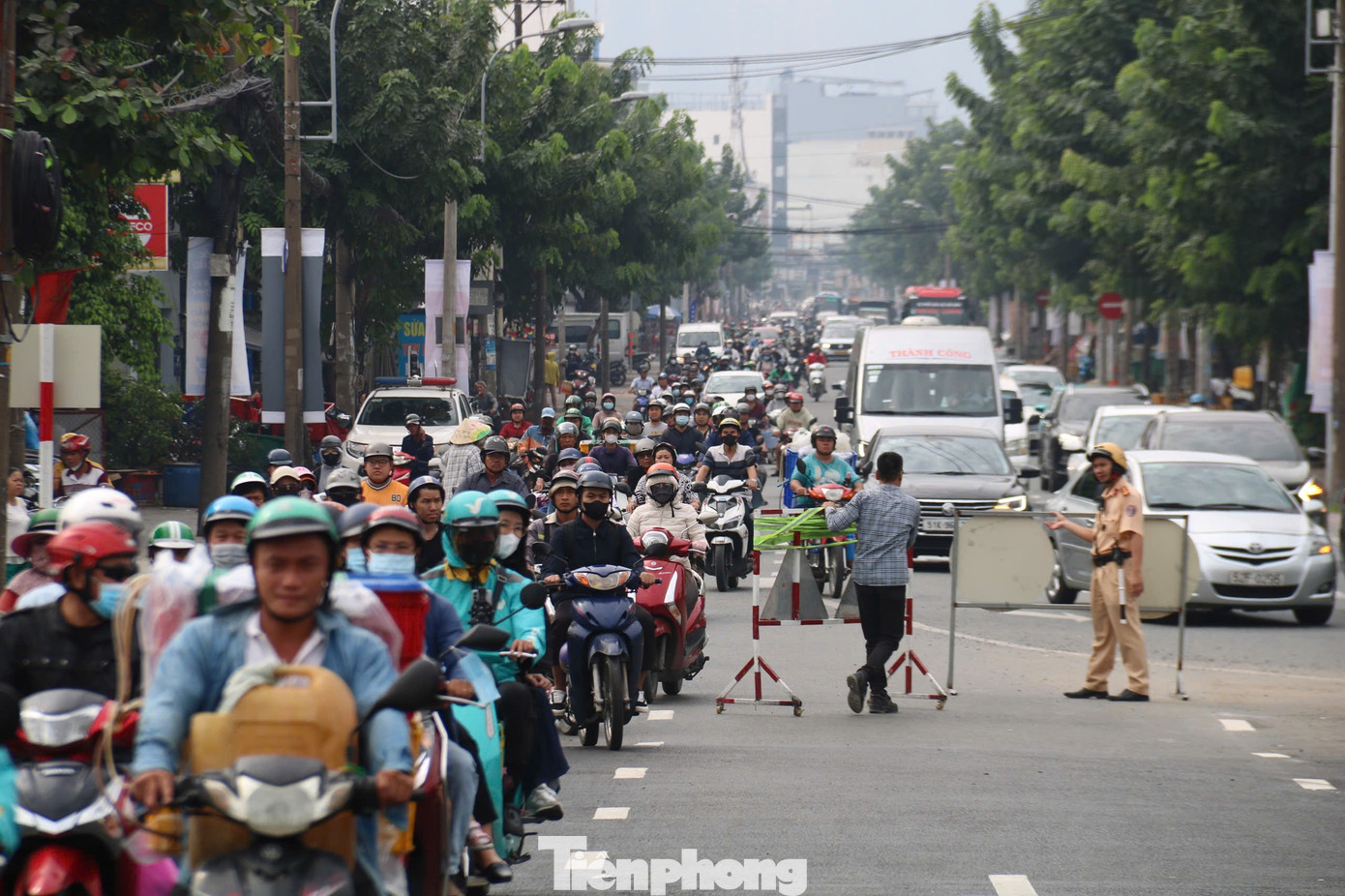
Binh Trieu 1 Bridge before resuming car traffic.
According to Mr. Lam, post-construction load testing confirmed that all technical parameters met design requirements, ensuring quality and operational safety. “The project was completed one month ahead of schedule, and all inspection results met requirements. This demonstrates the significant efforts of all involved parties,” he said.

Binh Trieu 1 Bridge completes clearance height upgrade, resumes car traffic, and helps reduce congestion in the area.

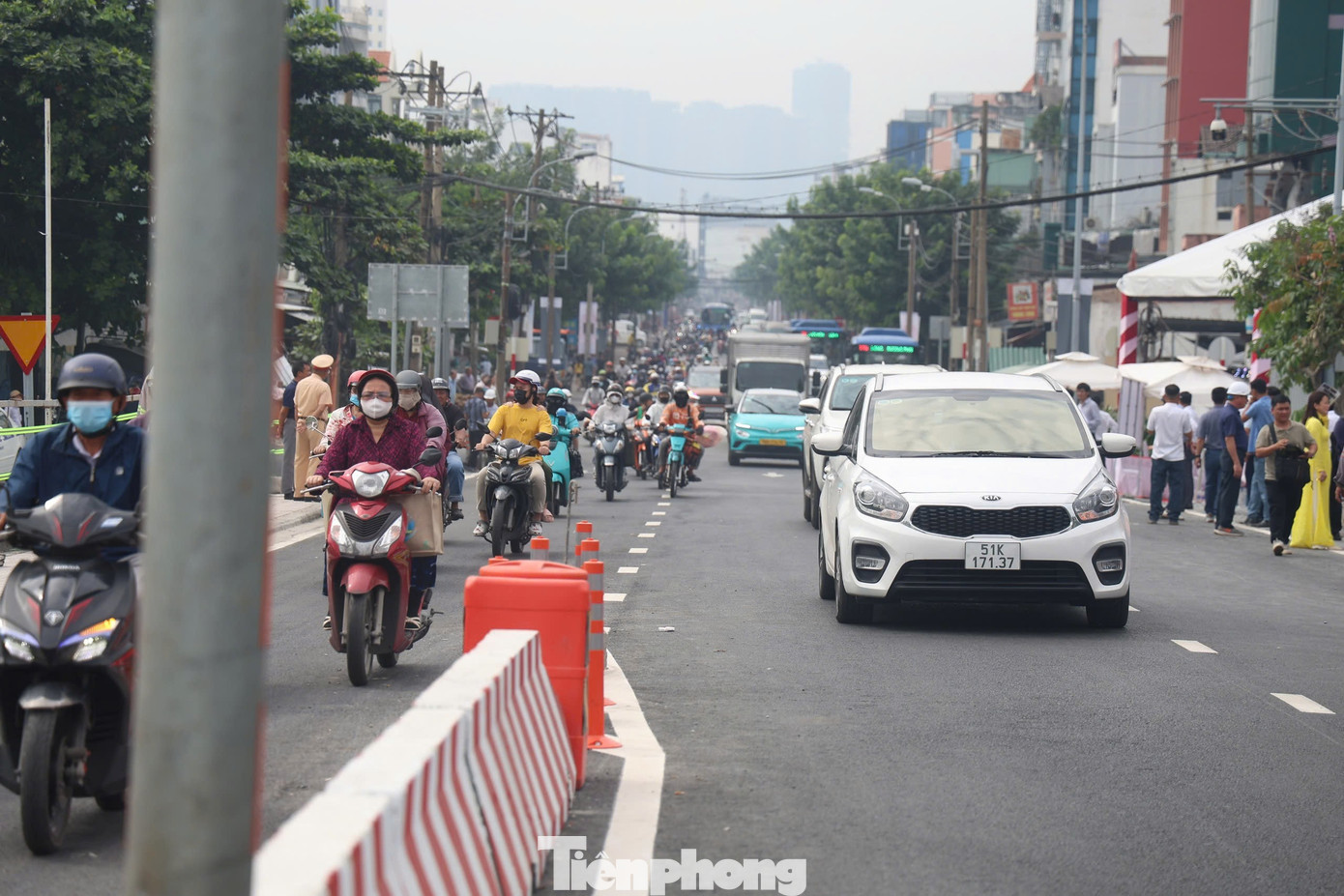
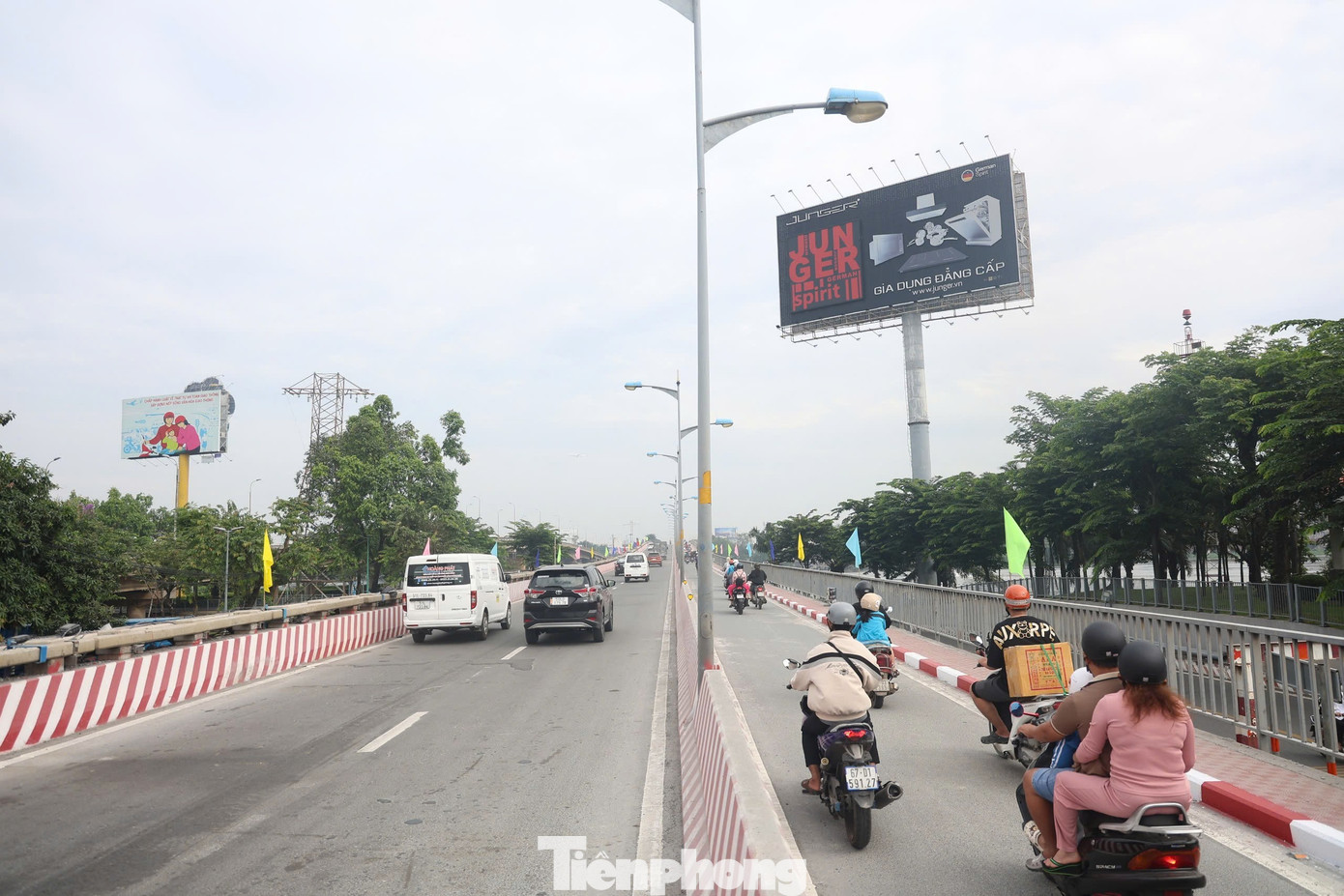
Upon completion of the clearance height upgrade project, Binh Trieu 1 Bridge will facilitate one-way traffic from Binh Thanh Ward to Hiep Binh Ward, while Binh Trieu 2 Bridge will handle one-way traffic from Hiep Binh Ward to Binh Thanh Ward.
HCMC Department of Construction leaders added that traffic demands at this gateway are increasing due to connections between HCMC and Binh Duong, as well as northeastern provinces. Moving forward, the city will continue implementing major projects to address congestion and enhance connectivity.
Accordingly, HCMC is studying the construction of Binh Trieu 3 Bridge, expanding Ung Van Khiem – Dinh Bo Linh Road, and preparing to build an elevated road from Binh Trieu through Binh Loi Bridge to Binh Duong. The city is also collaborating with Masterise Group to research Urban Railway Line 3, connecting Hiep Binh Phuoc to Ben Thanh and Tan Son Nhat, creating a high-capacity transport network for the area.
Vietnam’s Engineering Marvel: River Bridge Rises 1.08 Meters, Officially Reopens Today
The river bridge, recently put into operation, has been elevated by an impressive 1.08 meters using groundbreaking technology, showcasing the exceptional capabilities of Vietnamese engineers.
Up-Close Look at the 11,000-Ton Binh Trieu 1 Bridge After a 1.08-Meter Elevation
The 11,000-ton Bình Triệu 1 Bridge has been successfully lifted over 1 meter by engineers and workers, with all construction phases expected to be completed by late November, allowing vehicular traffic to resume.



